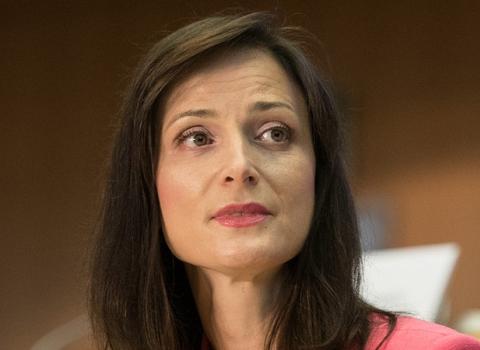
Jean Stéphenne: inside, but independent.
There, over the past 30 years, Jean Stéphenne has crafted one of the most productive units of the company, GSK Biologicals, transforming a small vaccines entity into a significant revenue and profit contributor. The enterprise now holds 25 per cent of the world vaccines market. It produces 1.2 billion doses a year, employs 6,200 people worldwide and will generate revenues of around $3 billion this year.
Yet in 1974, when Stèphenne joined what is now GSK Biologicals, there were 50 people and annual revenues of $3 million from the company’s lone product, a 20 year-old polio vaccine.
What are the ingredients of this transformation? First, Stéphenne, now aged 55, was given the freedom to behave as if GSK Biologicals was his own company. And maybe more importantly, he has been able to keep this independence from the corporation under a highly regarded banner of intrapreneurship rather than be seen as empire building.
In 2001, GSK started to emulate Jean Stéphenne’s model in Rixensart with the launch of seven autonomous Centres of Excellence for Drug Discovery (CEDDs).
“The idea,” explains Stéphenne, “is to have both internal and external researches and to build multidisciplinary teams.” Even now that GSK Biologicals has 700 researchers on its payroll and about the same number at development level, Stèphenne does not want large internal groups.
GSK Biologicals researchers are divided in teams that work through a network of 40 scientific partnerships with universities and biotech companies. The same teamwork approach is used in clinical development. “This gives more flexibility and above all more ideas”, says Stèphenne.
The company is, for example, currently expanding its activities from preventative vaccines to therapeutic ones. In order to do that, it is working in collaboration with the Ludwig Cancer Institutes. GSK Biologicals has just moved the first vaccine developed under this collaboration, for treating lung cancer, into phase III clinical trials.
When he speaks of multidisciplinary teams, Stéphenne does not mean people coming from various scientific backgrounds, but business teams where scientific competence is joined by clinical, marketing and manufacturing expertise. “Those autonomous teams develop a better sense of business culture among scientists as well as a better sense of strategy and scientific realities among marketers,” explains Stéphenne.
The patent-based revolution
The son of farmers, Stéphenne graduated in chemistry and bioindustries from the Gembloux Agricultural University, Belgium, in 1974. After few months in a public lab, he fled the civil service for the dynamism of little private company RIT (Recherche et Industrie Therapeutiques) in Rixensart. There, he has experienced all the ups and downs of the corporate lab under the successive ownership of Beecham, SmithKline and finally GlaxoSmithKline.
In 1984, Stéphenne was asked to manage the development of a hepatitis B vaccine programme. The product was discovered in Rixensart, but the programme was stalled en route to commercialisation. He brought together a large panel of university researchers to deal with the various problems. Within two years the vaccine was on the market, giving Stéphenne a free hand to negotiate the expansion of the Rixensart facility, trumping proposals to transfer vaccine research to the US.
A true Belgian patriot – he was raised to the title of baron in 2001 by King Albert II – Jean Stéphenne has the ability to operate independently within the monolith of the parent company, allowing him to experiment with new ideas. These insights have completely transformed the world vaccines business.
In the 1980s, the hepatitis B vaccine became the first vaccine to be protected by patents. At a time giants such as Pfizer were deterred from investing in the field, because while the cost of clinical trials was skyrocketing the market was dominated by generics and profit margins were low.
Now vaccines are popular once more with pharma companies and their shareholders. “At a time when blockbusters drugs suffer the increasing pressure of generics, the production difficulty of biological products like vaccines creates barriers of entry and longer life cycles”, notes Stéphenne.
The independent intrapreneur is now considering a further move in his revolution of the world vaccines market. A true believer in globalisation’s virtues, Stéphenne wants to conquer the North from the South. Instead of launching in the US and Europe the 20 vaccines GSK Biologicals has in clinical trials, and the 20 in pre clinical development, he will first offer them to developing countries.
Stéphenne believes the drug industry cannot afford to repeat the communication mistakes made when it priced HIV drugs beyond the means of poorer countries, and he hopes his South–North strategy will avoid price wars. “GSK Bio is not entering market without strong innovation,” says Stéphenne.
Regulators like the US Food and Drug Administration and the European Medicines Agency, EMEA, are asking for enormous quantities of clinical data, driving up development costs, which then have to be reflected in vaccine prices. Regulators in developing countries are quicker to adopt innovation because the alternative is often death. The malaria vaccine GSK Biologicals hopes to introduce in 2010 is a good illustration of this strategy. In Africa and Latin America, malaria vaccination is a major issue, while in Europe and the US the market is limited to tourists and travellers.




 A unique international forum for public research organisations and companies to connect their external engagement with strategic interests around their R&D system.
A unique international forum for public research organisations and companies to connect their external engagement with strategic interests around their R&D system.